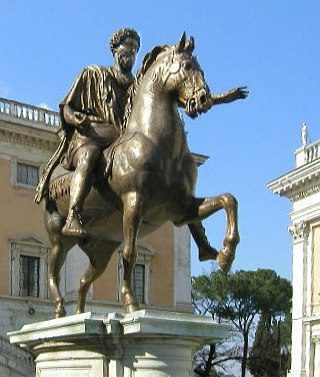Understanding history is difficult and open to interpretation, no doubt. Much of this difficulty is due to the complexity of the factors involved. The further back we look and the more fragmentary the information. Documentary evidence, or lack of it, seems the main hindrance but it’s not the only one. Our perception of time and scale is also an issue.
As people grow older they will invariably complain about “time flying by faster and faster”. Rather than being an issue with time itself, it is obviously an issue with our cerebral mechanisms for the perception of time. Plenty of studies are ongoing on the matter, but I would say it’s incontrovertible that the mechanism we have for the perception of time is at best non-linear. Indeed the issue is not only with our perception of time, but also with our perception of scale and magnitude. Tests of our sensitivity to quantities such as light brightness suggest we behave in a logarithmic fashion. Perhaps the same applies to time also, somehow.
Slavery in the US was abolished in 1865, less than 200 years ago and racial division of society has barely been dealt with in the last 100 years. Votes for women across the Western world barely became common-place in the early-mid 20th century. I daren’t consider how it can be that in the last 100 years entire populations have been involved, directly or indirectly, in genocide and the most horrific tortures and exterminations. Looking back from our current vantage point we can see those behaviours were unacceptable and we reject them as something “in the distant past”. Other generations. Choices made by people who had little in common with us: “yes but that wasn’t me, I’m one of the victors who reformed the system”.
A multitude of ancient Roman history themes are addressed as “ancient Roman…”. We rarely consider that ancient Rome spanned well over 1000 years. If we consider the extension of the term “ancient Roman” to include the Eastern part of the Empire, we would have to recognise it survived as far as the Renaissance. Mid 16th century, blasted by Turkish cannons. So the count would be something in the region of 2200 years from start to end. We are tempted and sometimes forced by necessity, to treat the highly fragmentary literary sources as is they were virtually contemporary. One or two hundred years between one literary source and another seem like an instant and taken as corollary proof of Roman behaviour.
Switching our vantage point can be revealing: Will people looking back at us some 2000 years from now, conflate Slavery, women’s vote, WWII gas chambers and genocide as common elements of our modern society? We’d feel it unfair, so is it fair to bundle such fundamental themes as “slavery in ancient Rome” or the role of “ancient Roman women” as if it were a single social context?
Which leads us back to asking “Were the Romans in the year 500BC much the same as in year 300AD?” When we consider ourselves as modern men and women responsible for the pervasive slavery 200 years ago, the answer is a very likely “no”. We are not the same people or indeed feel personally responsible for the slavery way back when in the 19th century. It follows that the Romans in the year 300AD were not the same as their forefathers in 500BC or indeed as their ancestors in the year 0.
So why from our distant vantage point do we consider the Roman people as one cohesive society, one moral system, one collective responsible party?
Conclusion on the perception of time in ancient history:
Perhaps both answers are correct and we easily shut our eyes to our current moral responsibilities, or we have something to learn when judging societies of the distant path: our judgement of history is shaped by our non-linear perception of time and scale.
The above also raises the question of whether what we judge in a society, historically, is very different from the way we judge ourselves in the present. The priorities seem to change: “The ancient Romans, were all a nasty bunch who condoned slavery and mass murder, they were all collectively responsible for xyz”. But when we consider ourselves as individuals living the present moment, today, we invert the moral order of importance: Less able to influence the overall behaviour of society and greater focus on the personal ability to procure a steady life for our immediate selves and family. Somehow more moral in the long-term and more bent on basic egocentric survival aspects in the short term.
Either way, the sense is that our judgement of history is subject to a great deal of non-linear behaviour between present and past:
- A different set of moral scales.
- Non-linear treatment of time

